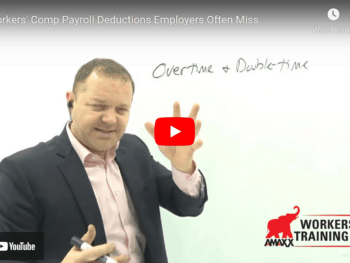Here’s What Happened
Albertson worked the midnight shift at her employment. On the date of her injury, she walked to the employer’s cafeteria to get a cappuccino and then walked toward the restroom. After she opened the restroom door she thought/assumed the door hit her on the back of her head. She fell backward, striking her head on a concrete wall screening the restroom from the work area. Unconscious for a brief period, she came to next to the concrete wall. A co-worker partially witnessed the incident and noted that Albertson may have fainted just as she entered the restroom. Albertson sustained a C2 fracture that required two surgeries. The Commissioner determined that Albertson was entitled to benefits based on a positional (workersxzcompxzkit) risk theory and, in the alternative, found the injury compensable as an idiopathic fall. The employer appealed to the district court, pointing out that there was some evidence that Albertson was battling a severe cold and that she just fainted, sustaining a noncompensable injury. The district court ruled that Iowa did not utilize the positional-risk doctrine and also concluded that the commissioner’s idiopathic fall analysis was “confusing.” The district court accordingly remanded for additional analysis.
Here’s How the Court Ruled
In Benco Mfg. v. Albertsen, 2009 Iowa App. LEXIS 72 (February 4, 2009), the Court of Appeals of Iowa reversed the district court and reinstated the Commissioner’s finding of compensability. The court first observed that Iowa indeed had not adopted the positional risk rule. Compensation could be awarded, however, for injuries resulting from risks that were personal to the employee (idiopathic falls/injuries) where the employment aggravated the injury. The court indicated that the concrete wall screening the restroom door was related to the working environment and had aggravated Albertson’s injury from her fall by causing the neck fracture. Accordingly, the employee was entitled to benefits. The court of appeals reversed the district court’s judgment and remanded for entry of a judgment affirming the Commissioner’s award of benefits.
See generally Larson’s Workers’ Compensation Law §§ 7.04, 9.01.
Author: Tom Robinson, J.D.
Tom Robinson, J.D. is the primary upkeep writer for Larson’s Workers’ Compensation Law (LexisNexis) and Larson’s Workers’ Compensation, Desk Edition (LexisNexis). He is a contributing writer for California Compensation Cases (LexisNexis) and Benefits Review Board – Longshore Reporter(LexisNexis), and is a contributing author to New York Workers’ Compensation Handbook(LexisNexis). Attorney Robinson is an authority in the area of workers’ compensation and we are happy to have him as a Guest Contributor to Workers’ Comp Kit Blog. Tom can be reached at: compwriter@gmail.com.
http://law.lexisnexis.com/practiceareas/Workers-Compensation
Click on these links to try it for yourself.
WC Calculator www.ReduceYourWorkersComp.com/calculator.php
TD Calculator www.ReduceYourWorkersComp.com/transitional-duty-cost-calculator.php
WC 101 www.ReduceYourWorkersComp.com/workers_comp.php
Do not use this information without independent verification. All state laws are different. Consult with your corporate legal counsel before implementing any cost containment programs.
©2008 Amaxx Risk Solutions, Inc. All rights reserved under International Copyright Law. If you would like permission to reprint this material, contact Info@WorkersCompKit.com
�













